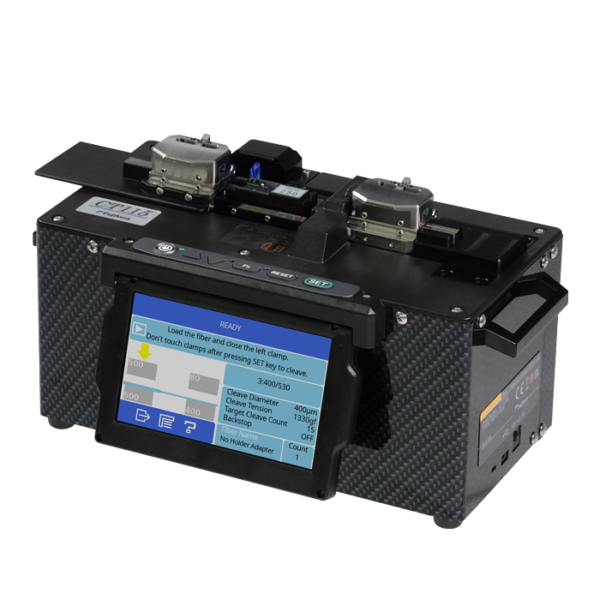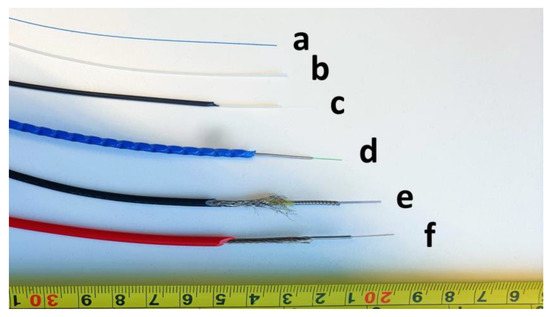Top-Rated Optical Fibre Diameter Analyser for Heavy-Duty Use
Top-Rated Optical Fibre Diameter Analyser for Heavy-Duty Use
Blog Article
Optimize Your Fiber Optic Performance: Understanding Optical Fiber Diameter Analyser Technology
The performance of fibre optic systems is critically influenced by the precision of their size, a factor commonly ignored in the search of ideal signal integrity. Understanding the modern technology behind optical fibre diameter analysers discloses the intricate balance between measurement accuracy and production top quality. These tools not just boost compliance with industry criteria however also give real-time understandings that can preemptively attend to potential problems. Nevertheless, the effects of their usage extend past simple measurement; they can basically change the landscape of fibre optic effectiveness. What factors should one think about to harness their full capacity?
Value of Optical Fiber Diameter
The diameter of optical fibre plays a vital duty in figuring out the efficiency and effectiveness of interaction systems. It influences a number of crucial specifications, consisting of the setting of light propagation, attenuation, and bandwidth ability. Larger diameters commonly permit multiple light modes, promoting higher information transmission prices. Conversely, smaller sizes often tend to sustain less settings, which can enhance signal clearness and minimize crosstalk.

Furthermore, understanding the size's ramifications can cause cost savings by decreasing the need for signal boosting and repeaters in comprehensive networks (optical fibre diameter analyser). Finally, the relevance of optical fiber size can not be overstated, as it directly affects the overall effectiveness and integrity of modern interaction systems

How Diameter Influences Signal Quality
Signal quality in optical fibre systems pivots significantly on the size of the fiber. The size affects several essential specifications, consisting of attenuation, data transfer, and modal diffusion. A smaller sized diameter can cause greater depletion rates, causing signal loss as light trips with the fiber. This depletion can compromise the stability of the transmitted data, bring about a decline in signal top quality, particularly over lengthy distances.
Conversely, bigger diameters usually permit for improved light capture and minimized modal diffusion, boosting signal clarity. In multimode fibers, a larger core diameter can sustain numerous light modes, however it might additionally present intermodal diffusion, which can weaken signal quality. For that reason, selecting the optimum fibre diameter is vital for achieving the desired performance in certain applications.
In addition, the interaction between the fibre diameter and the wavelength of the light used plays an essential duty in identifying the efficient transmission distance and total signal honesty. Comprehending exactly how fibre diameter influences signal quality is important for network designers and engineers striving to optimize optical fiber systems for reputable, high-speed information transmission.
Review of Size Analyser Technology
In lots of optical fibre manufacturing processes, exact dimension of fibre size is essential for ensuring constant performance and top quality (optical fibre diameter analyser). Size analysers are visit the site advanced instruments made to assess the physical dimensions of optical fibers with high accuracy. They utilize innovative optical and laser technologies to determine the diameter, ovality, and concentricity of the fibre, thus offering critical data for quality assurance
These analysers can operate in-line during the manufacturing process or as component of off-line screening methods. In-line systems make it possible for real-time monitoring, allowing producers to readjust parameters instantly, consequently preserving ideal manufacturing conditions. Off-line analysers, on the other hand, supply extensive evaluations of sets, making sure that any type of deviations from specified resistances are identified and resolved.
Diameter analysers significantly add to the reduction of problems in optical fibers, enhancing overall item dependability. By regularly gauging key specifications, these innovations promote conformity with sector criteria and requirements. As the demand for high-performance optical fibers proceeds to increase, the duty of diameter analysers becomes significantly vital in accomplishing the preferred top quality and efficiency requirements in fibre optic systems.
Key Attributes of Fiber Diameter Analysers
Although different designs of fibre size analysers exist, they frequently share several vital attributes that boost their capability and reliability. One of the most considerable features is high-resolution dimension abilities, which ensure exact diameter readings, crucial for maintaining quality assurance in fibre manufacturing. Additionally, lots of analysers integrate advanced optical sensing units developed to detect minute variations in fiber diameter, therefore offering invaluable information for procedure optimization.
An additional crucial attribute is real-time tracking, allowing operators to obtain immediate comments on fiber size throughout the production process (optical fibre diameter analyser). This ability facilitates rapid changes and minimizes the likelihood of flaws. Several analysers also come furnished with straightforward interfaces, making it possible for drivers to quickly navigate with settings and information outcomes
Furthermore, robust information storage space and evaluation performances are essential for tracking historical efficiency trends and guaranteeing conformity with sector standards. Some designs also use connectivity choices for integration into existing manufacturing control systems, improving general operational efficiency. Lastly, mobile and compact layouts enable flexible implementation within manufacturing settings, ensuring that quality assurance processes are smooth and reliable. These attributes jointly add to the effectiveness of fibre diameter analysers in maximizing fiber optic performance.
Finest Practices for Fibre Optimization
First, normal calibration of optical fibre diameter analysers is vital. This makes certain precise dimensions and reduces potential disparities that could affect performance. Next, maintaining a tidy workplace is important; dirt and impurities can result in signal destruction.
Furthermore, it is essential to pick fibres that meet particular application needs. This entails evaluating aspects such as depletion, data transfer, and view website ecological problems. Proper installation methods need to likewise be complied with, consisting of staying clear of sharp bends and extreme stress, which can compromise fiber integrity.
Moreover, utilizing sophisticated tracking systems can promote real-time performance evaluations, making it possible for timely recognition of issues. Routine testing and upkeep must be performed to make sure that fibres remain within optimum operational specifications.
Finally, training workers on view website the current fibre optimization modern technologies and methodologies will improve their capability to implement efficient approaches. By complying with these ideal practices, organizations can dramatically improve the performance and life-span of their optical fibre systems, making certain reliable communication and information transfer.
Final Thought
In final thought, the assimilation of optical fiber size analyser innovation is important for optimizing fibre optic performance. By ensuring precise measurements of fibre measurements, these analysers considerably improve signal quality and lower losses during data transmission.
Signal quality in optical fibre systems hinges dramatically on the diameter of the fiber.In lots of optical fibre manufacturing processes, exact measurement of fibre diameter is crucial for making sure consistent efficiency and quality. As the need for high-performance optical fibres continues to increase, the duty of diameter analysers comes to be progressively vital in accomplishing the wanted high quality and efficiency requirements in fiber optic systems.
These features jointly add to the efficiency of fibre size analysers in optimizing fibre optic efficiency.
In conclusion, the assimilation of optical fibre size analyser modern technology is vital for making the most of fiber optic efficiency.
Report this page